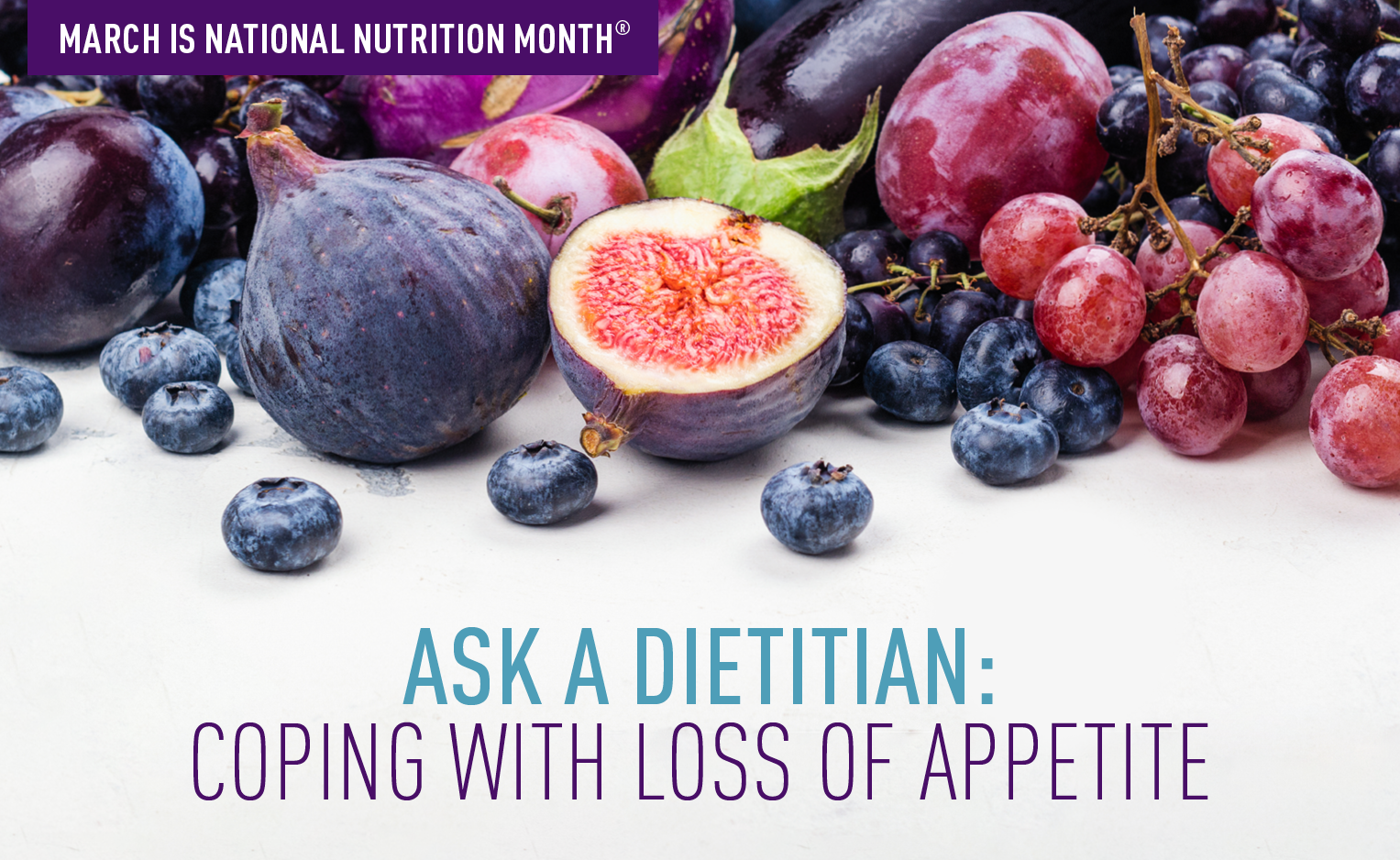
As part of National Nutrition Month®, we asked Colleen Gill, MS, RDN, CSO, a registered oncology dietitian, speaker and author, to share tips and tools for handling common nutritional challenges for patients with pancreatic cancer. In the first part of this three-part series, Colleen shares her “rule of three’s” to help patients work around their barriers to eating.
Since the pancreas plays such a key role in digestion, people with pancreatic cancer often experience nutritional challenges such as loss of appetite, difficulty digesting food, diarrhea and sometimes even changes in taste and smell. When foods don’t appeal to a patient or they feel like they can’t eat very much at one time, mealtimes become difficult and patients are at higher risk for nutritional deficiencies. Here’s what I call my “rule of three’s” that can be helpful for patients struggling to take in adequate calories. This guidance can also aid their caregivers.
1) Set a cell phone timer to remind yourself (or your loved one) to eat every two and a half to three hours throughout the day, with a minimum of five meals a day.
People with pancreatic cancer often have smaller stomachs due to surgery, or less of an appetite because of side effects. Many find it helpful to set an alarm to remind them to eat every few hours, especially since patients with cancer can find time slipping by and may miss an opportunity to consume some calories.
2) Make a list of options for breakfast, lunch, dinner, and snacks.
Many patients find that when the alarm goes off, they go to the refrigerator or cupboard, only to find it is difficult to choose what to eat. They often will say that nothing looks/sounds good, and that food doesn’t taste the same as they remember.
Having a list of foods/fluids that are tolerated helps everyone. Editing the list, rather than mentally searching for ideas, makes it far easier to come to a quick decision about what can be enjoyed in the moment. Food choices on a “difficult day” may be different than on “good days.” The important thing is for patients and caregivers to keep a schedule and do the best they can in that moment.
The list is always a work in progress. If a food can’t be tolerated more than once, it can be crossed off. As patients eat new foods, they can be added. Having a list encourages more variety, avoiding “burning out” on a specific food, when it is eaten every day, until the patient is sick of it. The list can serve as a guide for shopping trips, a reminder of foods that are appealing, and the extras that can be added to increase the calories in each bite, for example butter, mayonnaise, avocado.
It can also help to divert yourself from the work of eating, by eating snacks while reading, watching television, or listening to an audiobook. For patients struggling with a limited appetite, this can make the process more enjoyable. Commercials can be helpful in pacing the snack, reminding you to take a couple of bites when they come on.
3) Include fluids with calories, like oral supplements, in the list of options. These can be purchased from local grocery or drug stores, online, or made at home from a variety of recipes. Oral supplements provide calories in liquid form, which can be helpful for patients struggling with delayed gastric emptying, as fluids empty out of the stomach more easily than solids. Slower gastric emptying can make a patient feel full, further impacting their ability to eat any significant volume of food.
By following the “rule of threes,” patients are usually able to maintain their weight, or at least minimize the rate of weight loss.
I also stress that the patient themselves must be involved and invested in the nutrition plan. No one can make anyone else eat, and we all have memories of being forced to eat something we didn’t enjoy. This usually pushes our buttons in adulthood.
Caregivers can help, by providing a supportive environment, by shopping for the foods and bringing the list when the patient’s cell phone alerts them to snack/mealtimes. They can cook and serve the food, if needed, but their responsibility ends there. Encouraging the patient to eat a few more bites can backfire, contributing to a further sense of loss of control. Ultimately, the patient needs to take ownership of eating, doing their best at each opportunity.
Journaling can help create more awareness of what is being eaten. It doesn’t have to be done every day, but journaling can help identify the issues that are getting in the way of eating and drinking enough. It can also be a non-threatening way for the patient to communicate with concerned family members, who may be able to relax if they see the record of regular meals and snacks being consumed.
The complicating factor for people with pancreatic cancer is the question of whether or not their food is being fully absorbed, so I always review the symptoms of malabsorption with them so they know what to look for and when to ask their team about pancreatic enzyme therapy. I still find oncologists who haven’t had a lot of experience with dosing enzymes, or with managing the overall symptoms that come up with this population. Consulting with a registered dietitian early in the course of treatment can help to prepare for these and many other conversations with your team about nutrition.
PanCAN strongly recommends that patients have access to pancreatic enzymes and see a registered dietitian. Patients should always consult with their doctor or registered dietitian before making any changes or additions to their diet.
















